Safety lens materials and their properties
Polycarbonate (PC)
INFIELD polycarbonate lenses are characterized by their extremely high mechanical strength and are therefore ideally suited as safety lenses for protective eyewear. PC lenses are very light compared to mineral glass lenses and do not cause sparks on the surface of the lenses. However, protective lenses made of PC are less resistant to scratches and therefore should be used with a scratch-resistant coating (HC). In addition, a hard coat improves the protection against chemical influences.
Special material characteristics: PC was originally developed for applications within the aeronautics industry and has since been utilised, due to it’s properties, as an ideal material for safety eyewear. Basically PC is a very soft and tough plastic that is characterised by its high strength. Energy caused by the impact of foreign bodies is absorbed by the material upon contact which leads to a higher impact resistance compared to other plastic materials.
Acetate (AC)
Acetate (cellulose propionate) is a thermoplastic consisting of, among other things, natural cotton. INFIELD acetate lenses are very form-flexible and therefore ideal for the usage in full-view safety goggles. A special coating prevents the lens from fogging and ensures longer lasting clear vision.
Special material characteristics: Acetate is very resistant to most chemical substances used in medicine and industry. Thus safety goggles with acetate lenses are perfect to protect when working with acids and alkalis, bleachers and cleansers, oils, brines as well as hydrocarbons.
Hard glass (mineral glass)
Protective lenses made of mineral glass are very resistant against scratches and are also characterised by high resistance to chemicals. Mineral glass is suitable for very dusty and sandy working environments. The high scratch resistance makes it easy to clean.
Trivex
Trivex as material for spectacle lenses is an innovative further development in the field of plastic spectacle lenses. It is ideally suited for work safety due to its material characteristics. TRIVEX offers the comfort of being particularly low weight whilst being extremely break-proof due to its very high mechanical impact and tensile strength. Regardless of the spectacle lens thickness, TRIVEX ensures an excellent optical quality providing clear and sharp vision without visual interference. Furthermore, spectacle lenses made of TRIVEX protect against harmful UV-radiation and are resistant to many chemicals and solvents.
ProCoat Coating Technology
Perfect protection in all work situations
Our coatings are based on many years’ experience developing products for personal protection equipment (PPE). Our problem-specific solutions for very hazardous situation.
CLEAR HC – super scratch resistant
This special lacquer coating greatly enhances scratch-resistance on both surfaces of the lens. The hard layer also improves protection against chemical attack.
Areas of application: This coating is suitable for environments in which the safety spectacles need frequent cleaning. Dust and grit are just as easily removed as thin and viscous fluids.
| Coating(s): | Hard Coating | ||
| HC | Designation (abbreviation): | HC |
CLEAR AF AS – anti-fog, scratch-resistant, antistatic
This coating makes safety lens scratch-resistant, anti-fog and anti-static on both the inner and outer surfaces. In particular, a combination of anti-fog and anti-static effects ensures clear vision for long periods. The lens surfaces remain dirt-free for longer and are more easily cleaned.
Areas of application: This coating is suitable for work in constantly changing temperatures, when perspiration build-up is a problem and/or for activities in moist, warm and dusty environments.
| Coating(s): | anti-fog | anti-static | ||
| CLEAR AF AS | Designation (abbreviation): | AF | AS |
CLEAR AFP – super scratch-resistant, super condensation-free, antistatic
The perfect coating combination of INFIELD´s CLEAR HC and CLEAR AF AS with enhanced scratch-resistance and anti-fog on both the inner and outer surfaces of the glasses. This improved anti-fog effect ensures that the glasses are fog resistant even with extreme temperature fluctuations. The enhanced scratch-resistance provides greater protection from external effects.
Areas of application: This coating is suitable for environments in which the safety spectacles need to be cleaned frequently. Dust and grit are just as easily removed as thin and viscous fluids. Additionally, this coating is suitable for work in constantly changing temperatures, when perspiration build-up is a problem and/or for activities in moist, warm and dusty environments.
| Coatings(s) | Hard Coating | anti-fog | anti-static | ||
| CLEAR AFP | Designation (abbreviation): | HC | AF | AS |
CLEAR SAR – super anti-reflection
CLEAR SAR eliminates practically all distracting reflections. Particularly in working environments where safety spectacles have to be worn under bright artificial light, this super anti-reflection effect helps prevent tired eyes and supports concentration. With their additional hard layer, safety lenses with CLEAR SAR are also scratch and chemical-resistant.
Areas of application: This coating is particularly suited to production areas where safety spectacles have to be worn and to industrial environments with strong artificial light, e.g. assembly shops.
| Coating(s): | super anti-reflex | hard coating | ||
| CLEAR SAR | Designation (abbreviation): | SAR | HC |
Lens tints
Below you will find an overview of the different tints of the protective lenses for face protection glasses.
| CLEAR colourless | |||
|---|---|---|---|
| Available for lens material(s) | Polycarbonate, acetate | CLEAR colourless lenses are available in a number of designs with a range of coatings. |  |
| Standard | EN 166, EN 170 | ||
| UV-protection | UV 385 | ||
| Optical quality | class 1 | ||
| Transmission | 91 to 96% | ||
| Lens designation | 2C-1,2 | ||
| CONTRAST amber | |||
|---|---|---|---|
| Available for lens material(s) | Polycarbonate | Enhanced contrast for work in low light conditions. | 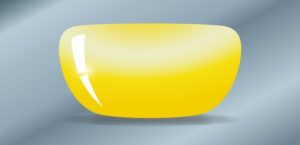 |
| Standard | EN 166, EN 170 | ||
| UV protection | UV 385 | ||
| Optical quality | class 1 | ||
| Transmission | 89% | ||
| Lens designation | 2 - 1,2 | ||
| CONTRAST orange | |||
|---|---|---|---|
| Available for lens material(s) | Polycarbonate | Enhanced contrast + anti-dazzle protection for work in low light conditions in the open air. |  |
| Standard | EN 166, EN 170 | ||
| UV protection | UV 385 | ||
| Optical quality | class 1 | ||
| Transmission | 47% | ||
| Lens designation | 2 - 1,7 | ||
| SUN Grey | |||
|---|---|---|---|
| Available for lens material(s) | Polycarbonate | Anti-glare protection in sunlight | 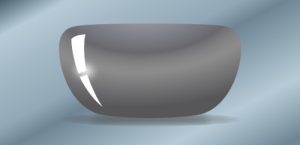 |
| Standard | EN 166, EN 170, EN 172 | ||
| UV protection | UV 385 | ||
| Optical quality | class 1 | ||
| Transmission | 23% | ||
| Lens designation | 5-2,5 | ||
| ProCoat MIRROR blue | |||
|---|---|---|---|
| Available for lens material(s) | Polycarbonate | Protection from extreme natural and artificial glare and dissipation of radiated heat. | 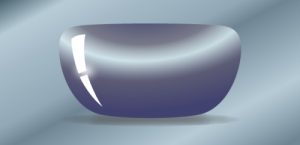 |
| Standard | EN 166, EN 170, EN 172 | ||
| UV protection | UV 385 | ||
| Optical quality | class 1 | ||
| Transmission | 20% | ||
| Lens designation | 5-2,5 | ||
| ProCoat MIRROR silver | |||
|---|---|---|---|
| Available for lens material(s) | Polycarbonate | Protection from extreme natural and artificial glare and dissipation of radiated heat. | 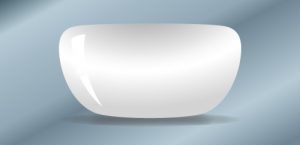 |
| Standard | EN 166, EN 170, EN 172 | ||
| UV protection | UV 385 | ||
| Optical quality | class 1 | ||
| Transmission | 20% | ||
| Lens designation | 5-2,5 | ||
| ProCoat MIRROR light Gold | |||
|---|---|---|---|
| Available for lens material(s) | Polycarbonate | Protection from glare in varying light conditions |  |
| Standard | EN 166, EN 170, EN 172 | ||
| UV protection | UV 385 | ||
| Optical quality | class 1 | ||
| Transmission | 53% | ||
| Lens designation | 5-1,7 | ||
| ProCoat MIRROR red/brown | |||
|---|---|---|---|
| Available for lens material(s) | Polycarbonate | Protection from glare during sport and leisure activities | 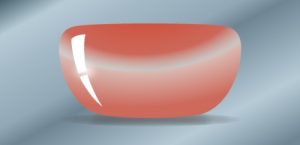 |
| Standard | EN 166, EN 170, EN 172 | ||
| UV protection | UV 400 | ||
| Optical quality | class 1 | ||
| Transmission | 12% | ||
| Lens designation | 2-3 | ||
| ProCoat UV 400 | |||
|---|---|---|---|
| Available for lens material(s) | Polycarbonate | Protection from high-level UV radiation and Blue-light stress, e. g. medical environments. | 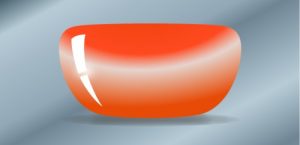 |
| Standard | EN 166, EN 170, EN 172 | ||
| UV protection | UV 400 | ||
| Optical quality | class 1 | ||
| Transmission | 44% | ||
| Lens designation | 2-1,7 | ||
| INFRARED | |||
|---|---|---|---|
| Available for lens material(s) | Polycarbonate | Protection from Infrared radiation emitted from kilns and furnaces, for example. |  |
| Standard | EN 166, EN 170, EN 171 | ||
| UV protection | UV 400 | ||
| Optical quality | class 1 | ||
| Transmission | 55% | ||
| Lens designation | 4-1,7 | ||
| WELDING | |||
|---|---|---|---|
| Available for lens material(s) | Polycarbonate | A range of safety lenses for a variety of applications in welding operations. From welding to flame-cutting, 5 levels of welder protection are available. | 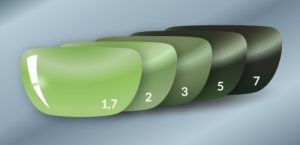 |
| Standard | EN 166, EN 169 | ||
| UV protection | UV 400 | ||
| Optical quality | class 1 | ||
| Transmission | 1-43% | ||
| Lens designation | 1,7/2/3/4/5/6 | ||
| ProCoat PHOTOCHROMIC | |||
|---|---|---|---|
| Available for lens material(s) | Polycarbonate | Safety lenses with a self-activating filter, which quickly quickly Reduces glare from solar radiation. The variable auto-tint function makes safety spectacles with this coating suitable for frequent and rapidly changing light conditions. |  |
| Standard | EN 166, EN 172 | ||
| UV protection | UV 385 | ||
| Optical quality | class 1 | ||
| Transmission | 12-82% | ||
| Lens designation | 5-1,1 | ||


